
10 Trends Shaping Chatbot Marketing for Sales Success
GeneralOverview
The article “10 Trends Shaping Chatbot Marketing for Sales Success” examines the dynamic landscape of chatbot marketing and the significant trends that are reshaping sales outcomes. It identifies critical trends, including:
- The integration of voice AI
- The utilisation of large language models
- The growing emphasis on personalization
- Omnichannel strategies
These elements collectively enhance user engagement and drive sales efficiency, underscoring the necessity for businesses to adapt to these advancements. Embracing these trends not only positions companies for success but also maximises their sales potential in an increasingly competitive market.
Introduction
In an era where customer expectations are constantly evolving, chatbot marketing has emerged as a pivotal strategy for businesses seeking to enhance engagement and drive sales success.
As technology advances, particularly with the rise of voice AI and large language models, companies are discovering innovative ways to leverage these tools for improved customer interactions.
However, with the rapid pace of change, how can businesses effectively navigate these trends to stay ahead of the competition and ensure a seamless user experience?
Agentics: Transforming Chatbot Marketing with Voice AI Solutions
Agentics is leading the way in transforming chatbot marketing by integrating voice AI solutions that significantly enhance user engagement and streamline communication. By utilising advanced voice recognition and natural language processing technologies, Agentics empowers businesses to create virtual assistants that are not only intuitive but also highly responsive. This evolution enables smooth interactions, leading to enhanced satisfaction and greater sales efficiency.
Consider the impact of voice-enabled chatbots: they handle inquiries in a more conversational style, crafting a personalised and engaging user experience. As we look toward 2025, projections indicate that AI will manage 95% of all client interactions, highlighting the growing significance of voice AI in chatbot marketing strategies. Furthermore, a striking 80% of companies plan to implement AI-driven voice technology in their service operations by 2026, emphasising the trend toward automation.
Successful implementations, such as NIB Health Insurance saving $22 million through AI-driven digital assistants and reducing service costs by 60%, illustrate how voice AI can elevate customer engagement. Companies are reporting up to a 30% increase in satisfaction scores, showcasing the tangible benefits of these technologies. Expert opinions highlight that enhancing user engagement through voice AI is essential for businesses aiming to stay competitive in an increasingly automated landscape. The time to act is now—embracing voice AI is not just an option; it’s a necessity for future success.
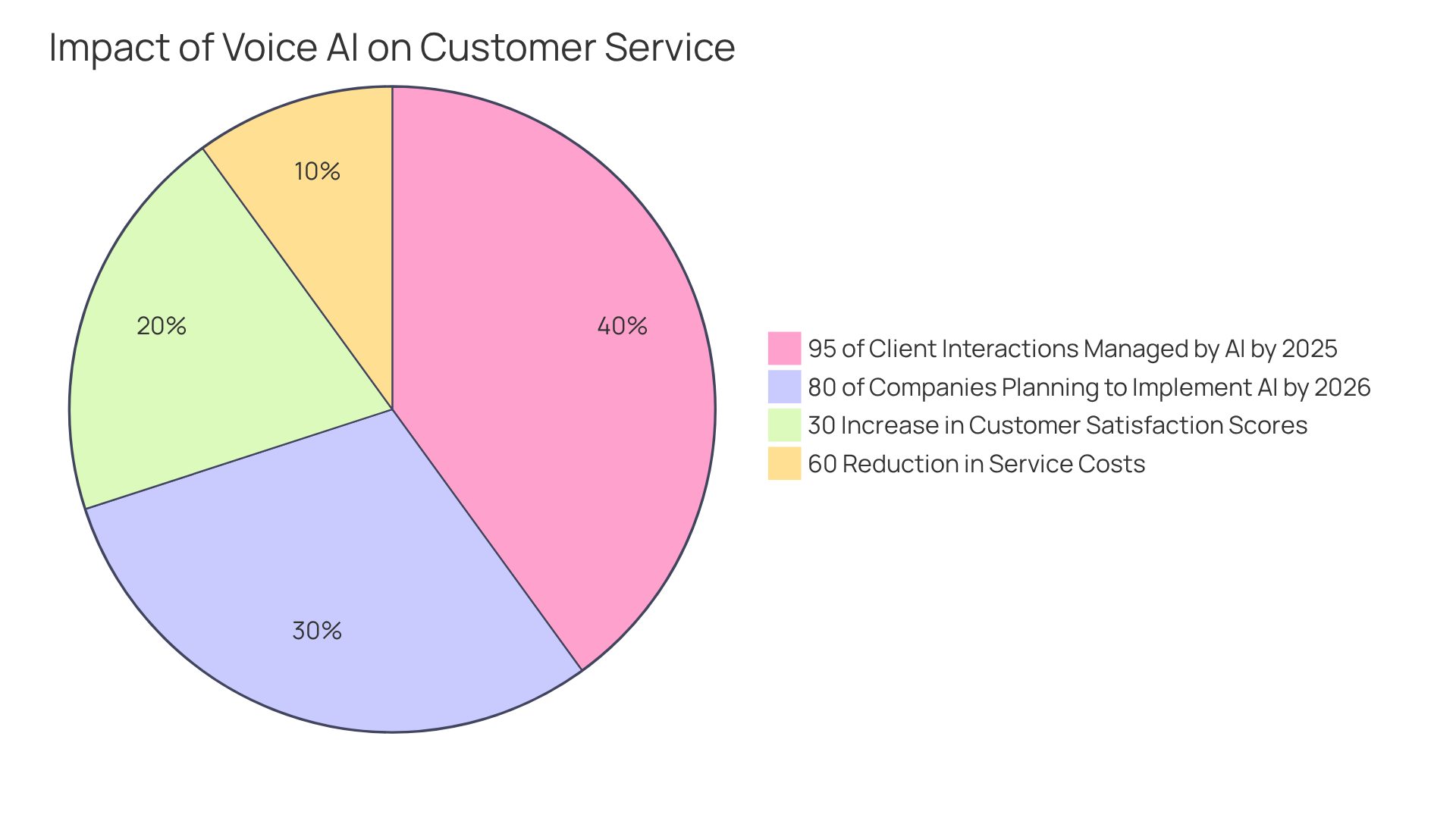
Large Language Models: Shaping the Future of Chatbot Interactions
Large language models (LLMs) are revolutionising chatbot marketing by enabling a profound understanding of context and facilitating responses that closely mirror human conversation. Models like GPT-4 empower conversational agents to engage in nuanced and meaningful dialogues, significantly enhancing the user experience.
Furthermore, ‘Agentics’ customised voice AI solutions amplify this transformation, allowing enterprises to leverage LLMs for improved client interaction and satisfaction. These advanced chatbots adeptly manage complex inquiries and deliver tailored responses, showcasing the efficacy of these technologies in elevating user interactions.
This pivotal shift towards LLMs, coupled with Agentics’ groundbreaking solutions, marks a significant transition towards more intelligent and adaptable chatbot systems, equipping organisations to effectively meet evolving client expectations.
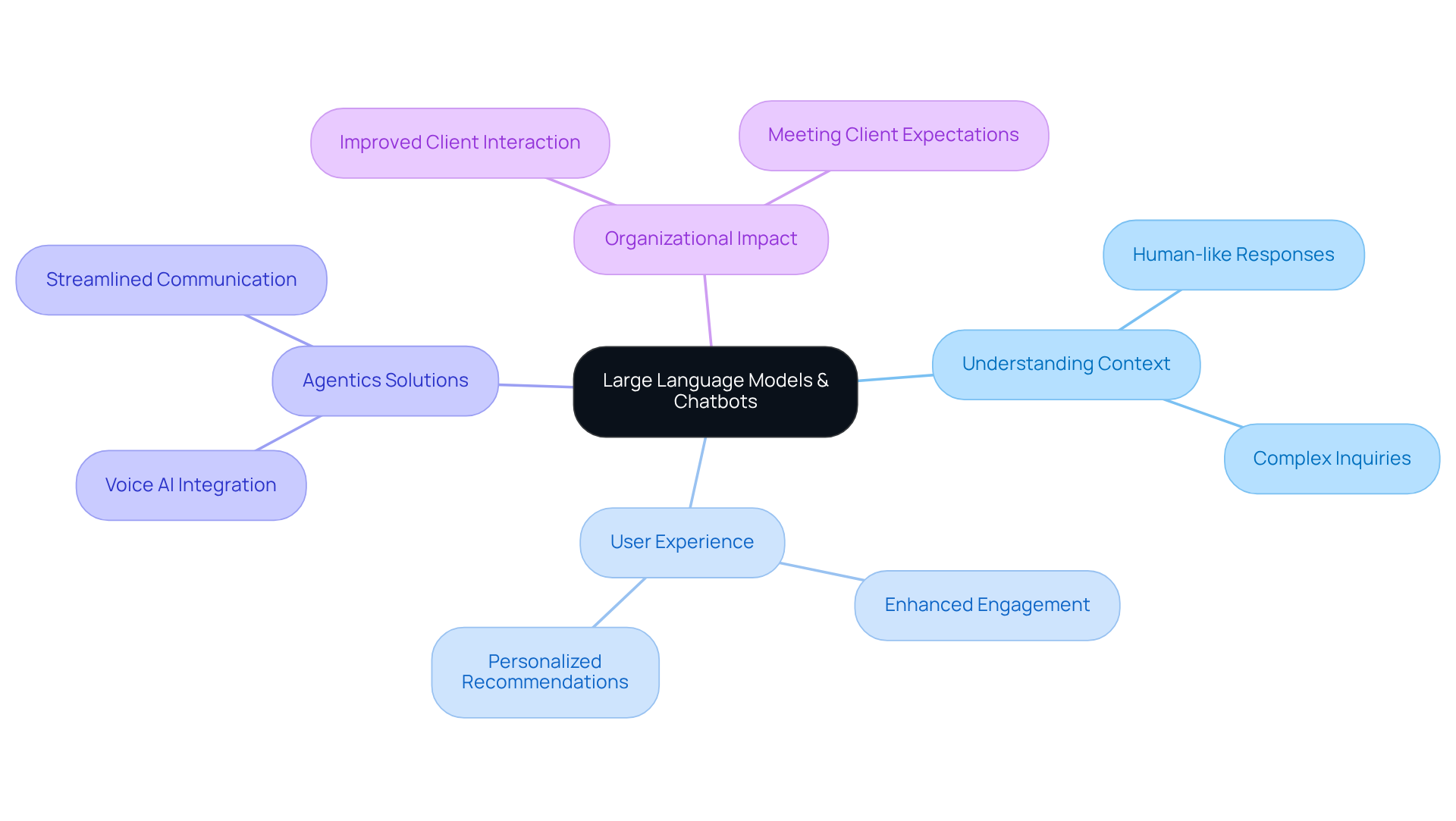
Customer Service Automation: Leveraging Chatbots for Enhanced User Experience
Chatbot marketing is revolutionising service automation by enabling businesses to deliver 24/7 support independent of human agents. By leveraging chatbot marketing to automate routine inquiries—such as handling FAQs, processing orders, and providing real-time updates—these systems can significantly reduce response times, often replying three times faster than human counterparts. This efficiency not only boosts client satisfaction but also allows human agents to concentrate on more complex issues, ultimately enhancing overall service quality.
Notably, businesses that have embraced chatbot marketing through automated messaging systems report a 30% reduction in support costs, underscoring substantial financial benefits alongside improved user experiences. Furthermore, 90% of enterprises have witnessed faster complaint resolution thanks to chatbot marketing, while 80% of clients interacting with AI-driven support have shared positive experiences.
Impressively, 88% of individuals have engaged in at least one conversation with a virtual assistant in the past year, showcasing the effectiveness of these tools in meeting user needs. As we move towards 2025, projections indicate that AI will handle 95% of all customer interactions, signalling a robust trend towards automation in customer service, particularly through chatbot marketing. Additionally, the global chatbot marketing market is anticipated to reach $46.64 billion by 2029, highlighting the increasing investment in this technology.
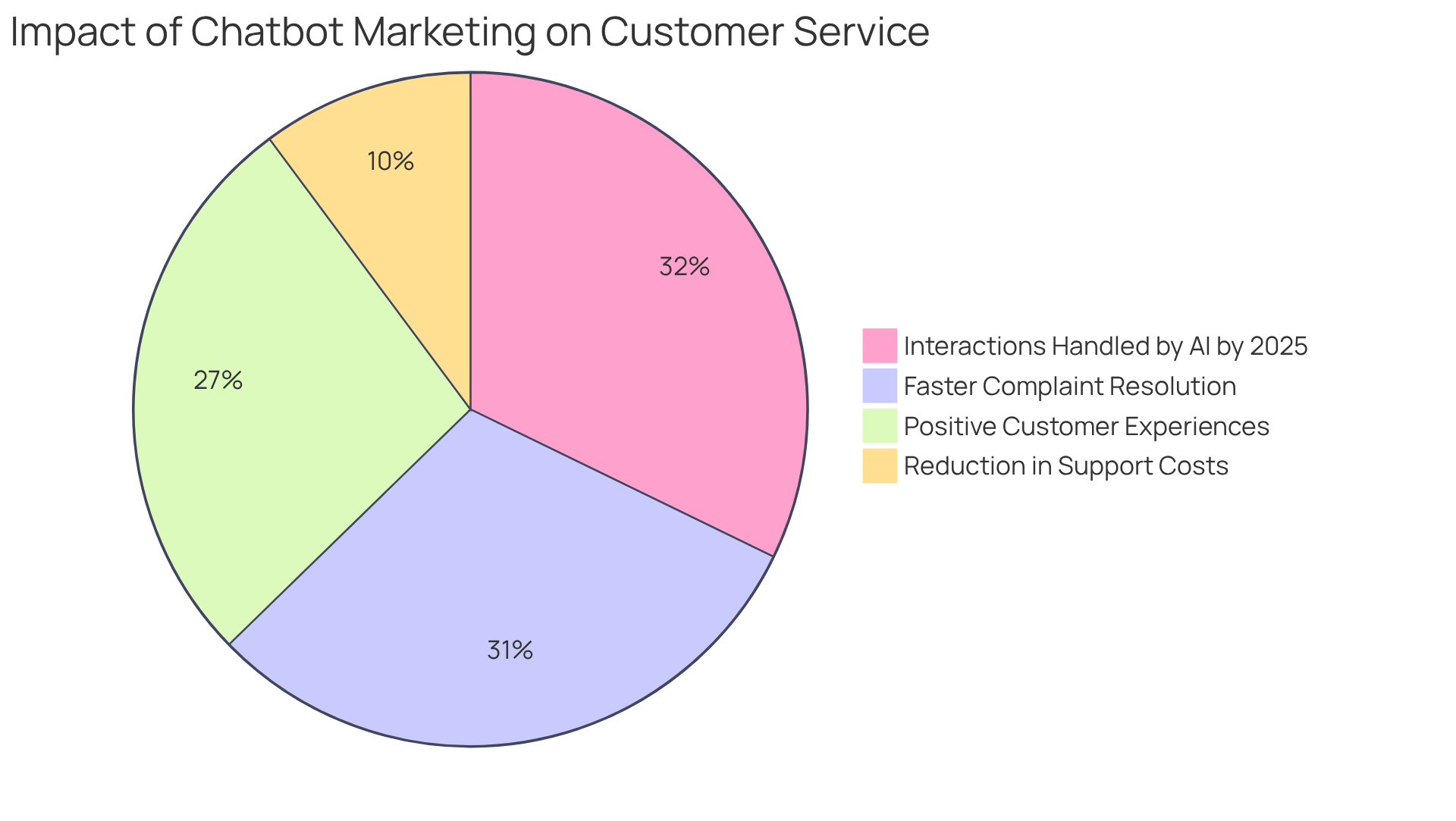
Personalization Strategies: Tailoring Chatbot Interactions for Better Engagement
Personalization strategies are vital for enhancing virtual assistant interactions and elevating user engagement, particularly when integrated with Agentics’ voice AI solutions. By leveraging client data, chatbots can tailor their responses to align with individual preferences and behaviours.
For instance, an automated assistant can recommend products based on past purchases or browsing history, creating a more relevant and engaging experience for users. This degree of personalization not only boosts satisfaction but also increases conversion rates.
By harnessing Agentics’ cutting-edge voice AI technology, businesses can further amplify these personalised interactions, leading to even greater success in chatbot marketing and engagement.
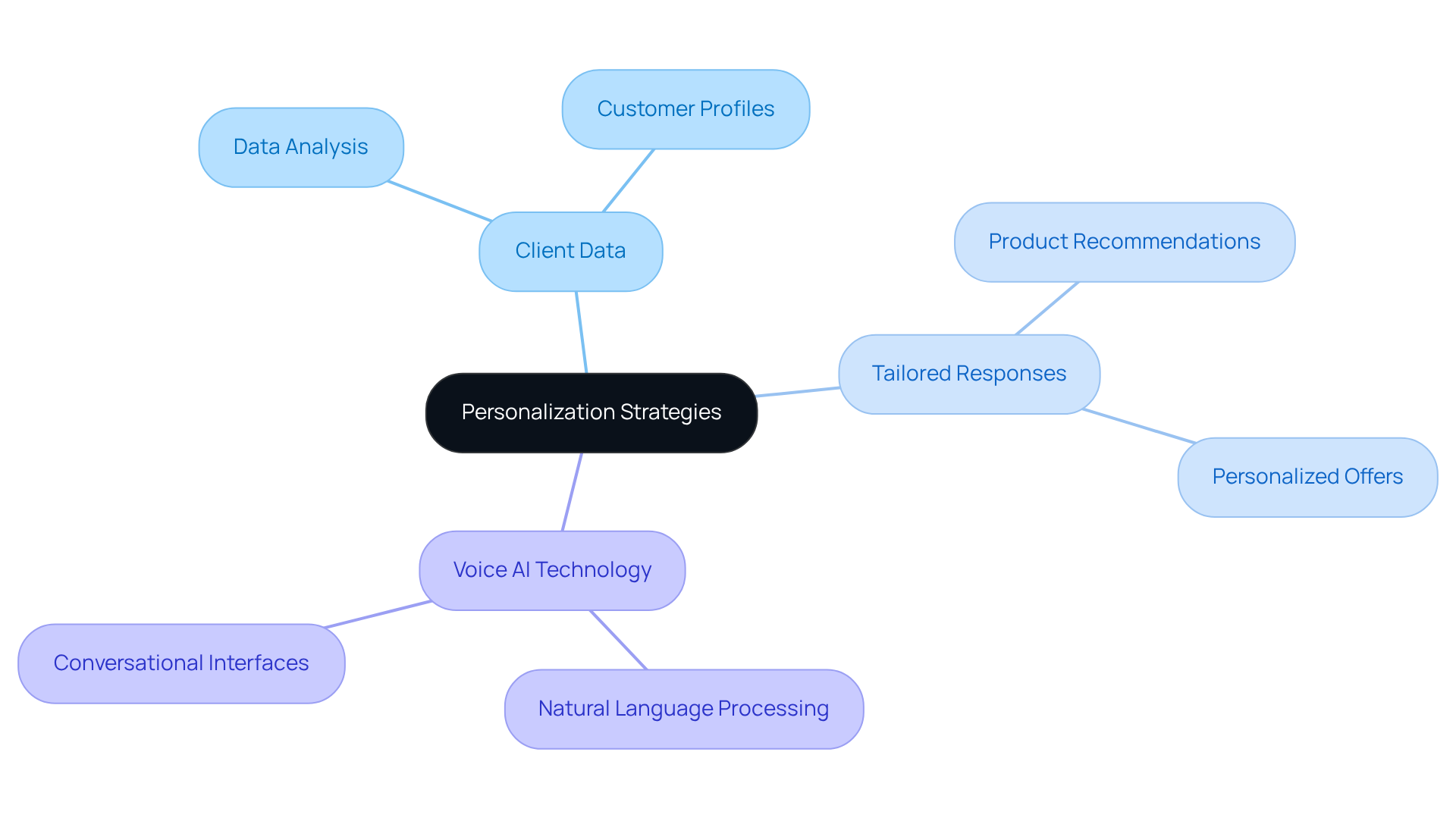
E-Commerce Integration: Utilizing Chatbots for Streamlined Transactions
Chatbot marketing is becoming integral to e-commerce platforms, facilitating streamlined transactions and significantly enhancing the shopping experience. By assisting clients during the buying process, virtual agents not only respond to inquiries but also offer product suggestions and aid with payment processing. This integration improves transaction efficiency and elevates customer satisfaction through immediate assistance.
As e-commerce continues to expand, chatbot marketing will play an increasingly crucial role in facilitating seamless transactions. Embrace this technology to stay ahead in the competitive landscape.
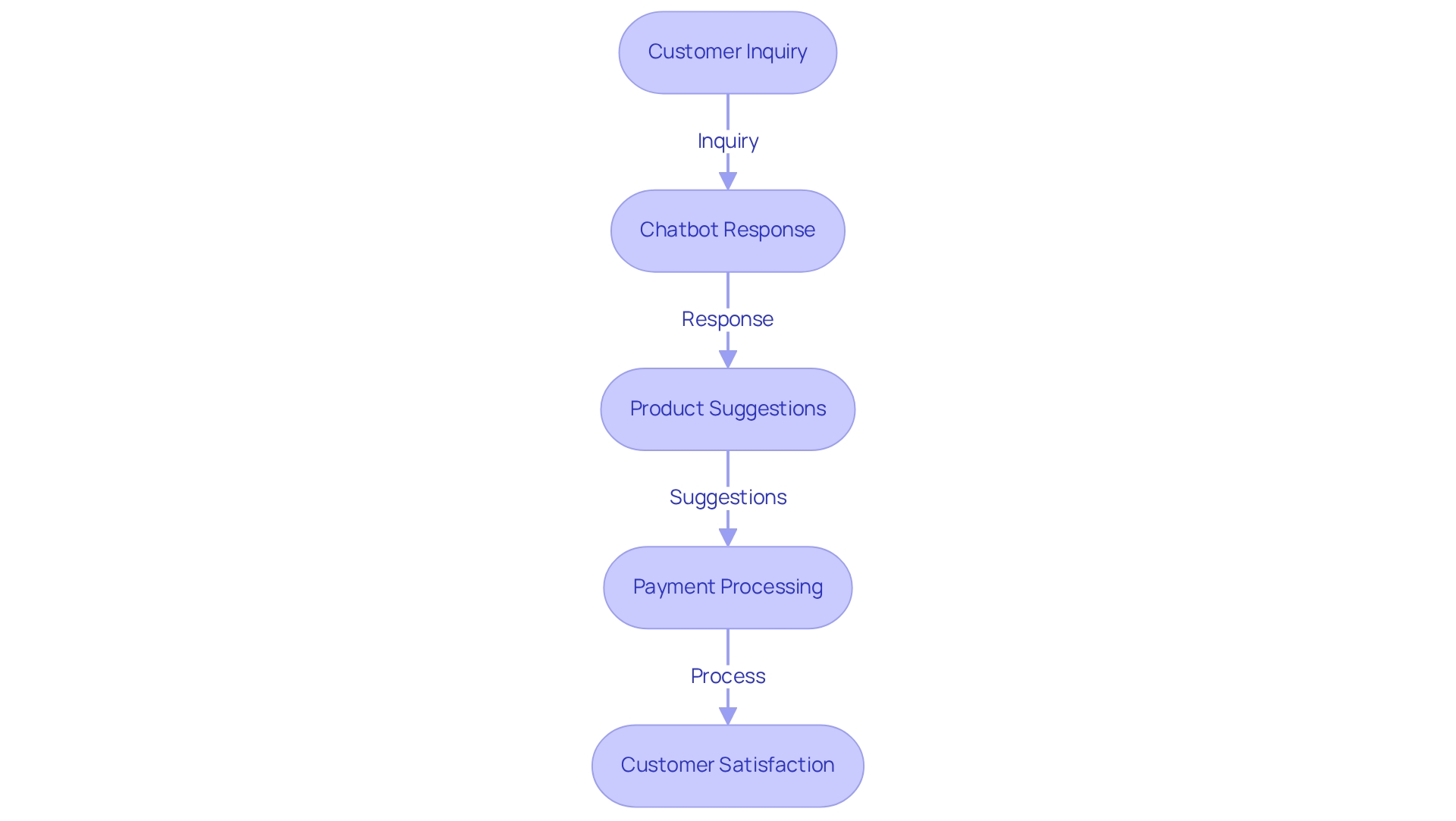
Data-Driven Insights: Enhancing Chatbot Marketing Through Analytics
Data-driven insights are essential for enhancing strategies in chatbot marketing for automated conversation agents. By analysing user interactions and feedback, companies can identify trends and pinpoint areas ripe for improvement.
For instance, analytics can reveal common inquiries from clients, empowering firms to refine their automated responses and elevate user satisfaction. Moreover, tracking engagement metrics enables organisations to assess the effectiveness of their chatbot marketing and automated messaging efforts.
This understanding allows them to make informed decisions, optimise their strategies, and ultimately drive better results.
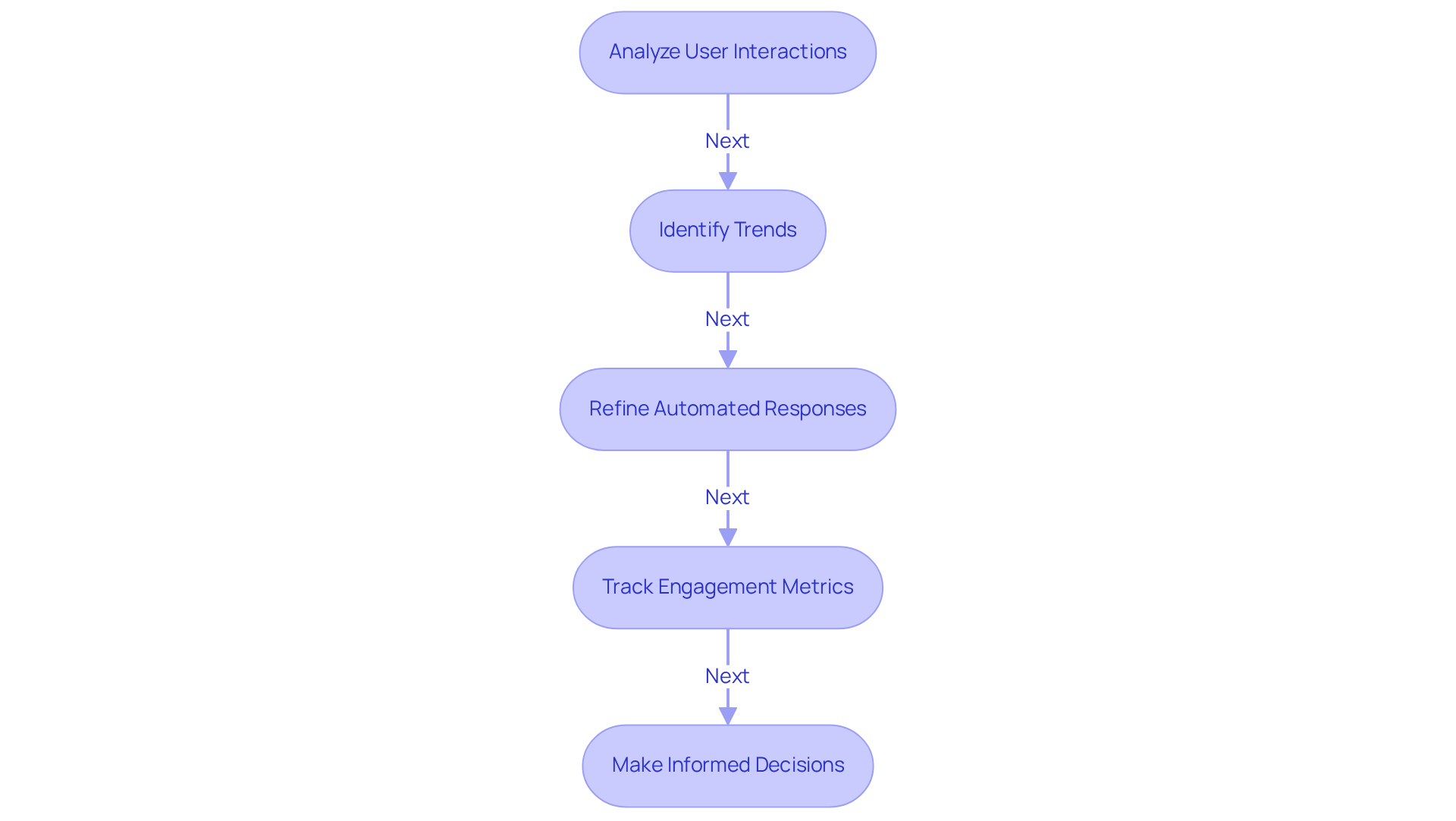
Omnichannel Approaches: Ensuring Consistency in Chatbot Marketing
Adopting omnichannel strategies in chatbot marketing is not just beneficial; it is essential for maintaining consistency across multiple platforms, significantly enhancing the overall user experience. By facilitating seamless transitions between channels—such as social media, websites, and messaging apps—businesses can uphold a cohesive brand voice and messaging. This consistency fosters trust among clients and amplifies engagement, allowing users to interact with the virtual assistant in their preferred environment without losing context.
Consider this: statistics reveal that omnichannel marketing boosts retention by 90%, underscoring the effectiveness of a unified approach. Retailers employing omnichannel techniques have reported staggering increases in purchase rates of up to 287%, demonstrating the tangible benefits of consistent messaging.
To achieve this level of consistency, businesses must ensure that their chatbot marketing automated interactions are aligned across all platforms, utilising integrated systems that facilitate real-time updates and coherent communication. Firms such as Agentics exemplify this by offering customised AI solutions that enhance client interaction while ensuring that messaging remains uniform across all touchpoints.
As industry specialists emphasise, maintaining a consistent voice across platforms not only boosts customer trust but also strengthens brand loyalty, making it a crucial strategy for effective marketing.
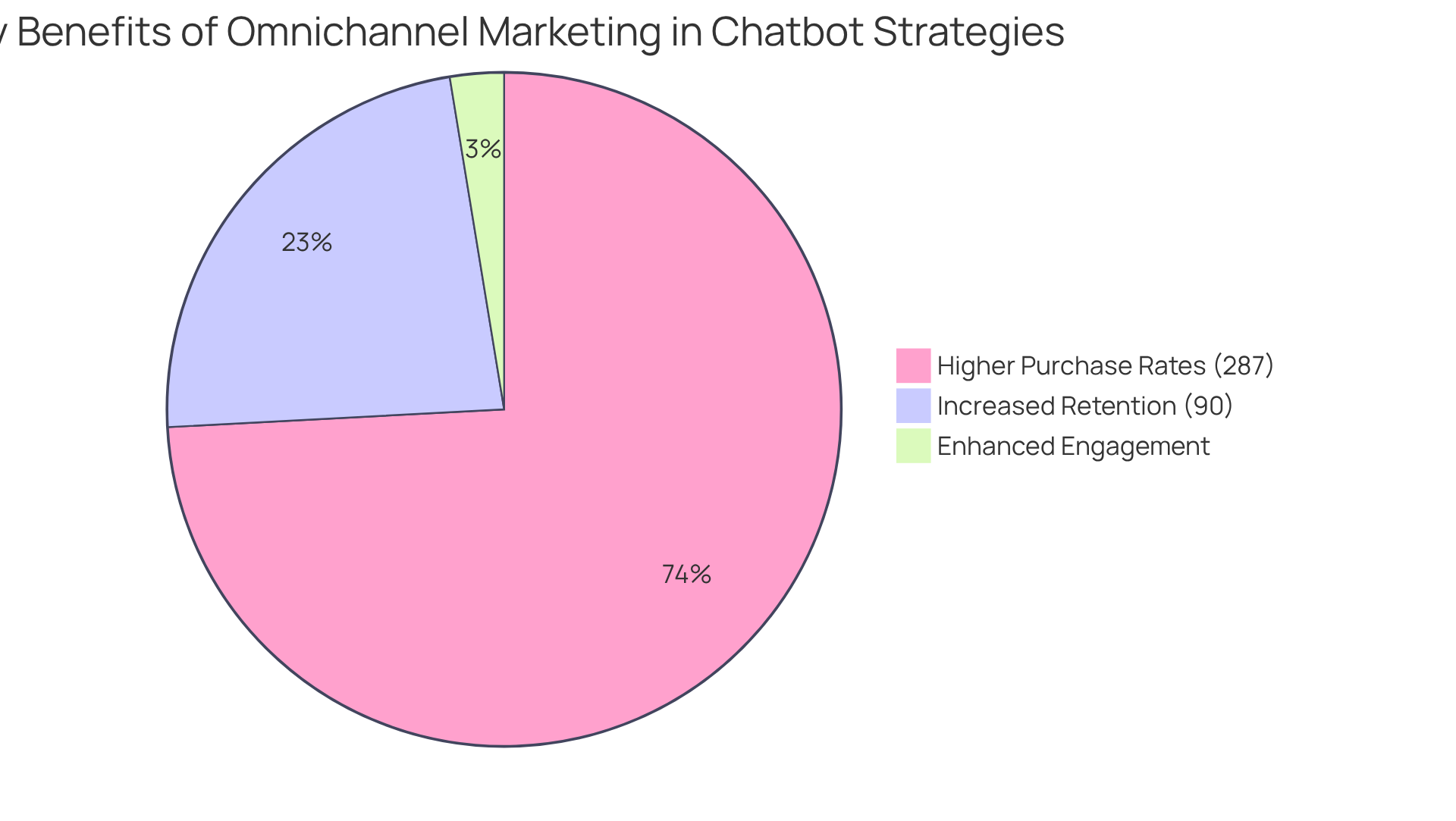
Ethical AI: Building Trust in Chatbot Marketing Through Transparency
In the realm of chatbot marketing, ethical AI practices are essential for establishing trust among users, rather than being just a trend. Transparency is the cornerstone that fosters this trust, compelling businesses to ensure their chatbots operate with fairness and clarity. Companies must provide users with straightforward information regarding data usage and privacy policies. By prioritizing these ethical considerations, organizations can cultivate stronger relationships with their customers, ultimately enhancing brand loyalty and solidifying their reputation. This unwavering commitment to ethical AI not only serves the interests of users but also positions companies as responsible leaders in an increasingly competitive market.
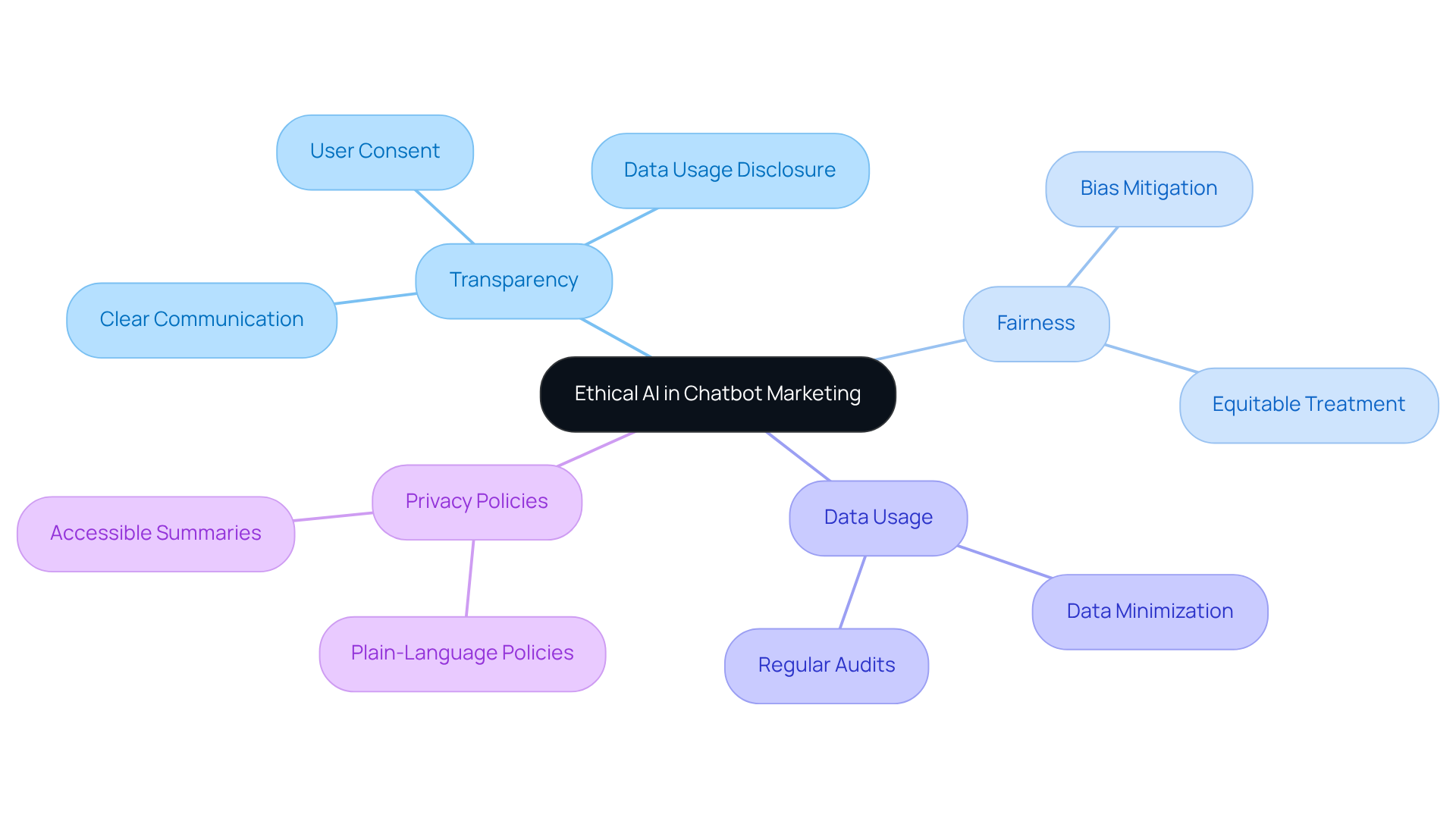
Lead Generation: Harnessing Chatbots to Capture and Nurture Prospects
Chatbot marketing is a powerful tool for lead generation, enabling businesses to effectively capture and nurture prospects. By engaging visitors through personalised interactions, these automated assistants qualify leads in real-time and collect valuable contact information.
For instance, an automated assistant can:
- Initiate discussions with website visitors
- Pose qualifying questions
- Seamlessly guide them through the sales funnel
This proactive strategy not only increases lead conversion rates—companies utilising automated response systems report a threefold improvement in conversion into sales compared to conventional methods—but also enhances the overall customer experience by providing timely assistance.
In fact, 67% of company leaders attribute higher sales to automated interactions, with 26% of all sales transactions originating from a bot engagement. As businesses increasingly adopt automated messaging systems, chatbot marketing leads to significant advancements in lead generation strategies, making these tools essential for modern marketing efforts.
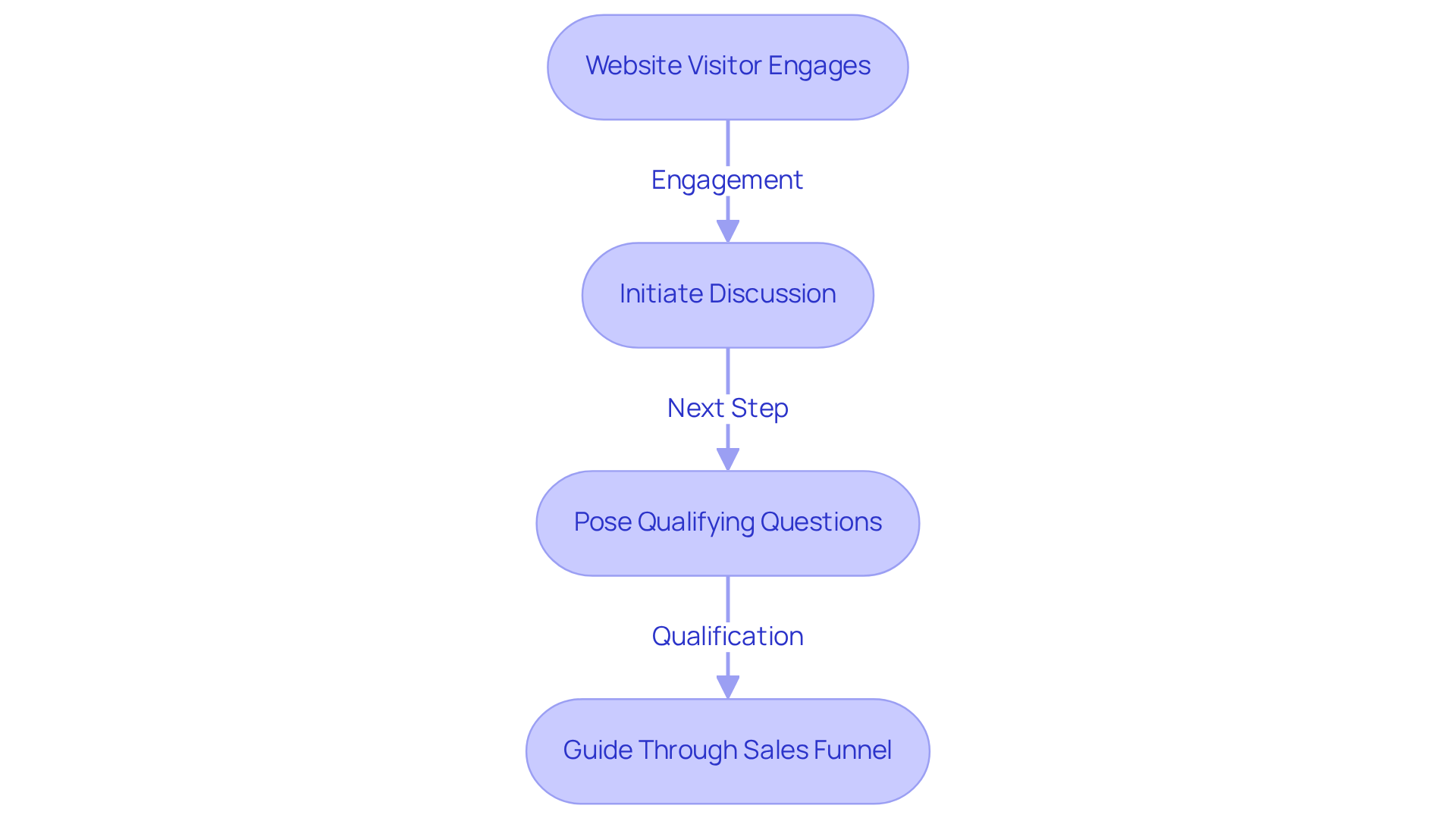
Future Innovations: Anticipating the Next Wave of Chatbot Marketing Trends
As chatbot marketing evolves, businesses must anticipate future innovations in chatbot marketing to remain competitive. The integration of advanced AI technologies, including emotional intelligence and predictive analytics, is set to revolutionise virtual assistants, enabling them to deliver more personalised and context-aware interactions. Furthermore, the rise of voice-enabled chatbots and multimodal interfaces will significantly enhance user engagement.
Agentics stands at the forefront of these innovations, offering tailored voice AI solutions that empower businesses to effectively leverage these trends. By embracing these advancements, organisations can position themselves at the cutting edge of chatbot marketing, which drives sales success and enhances customer satisfaction.
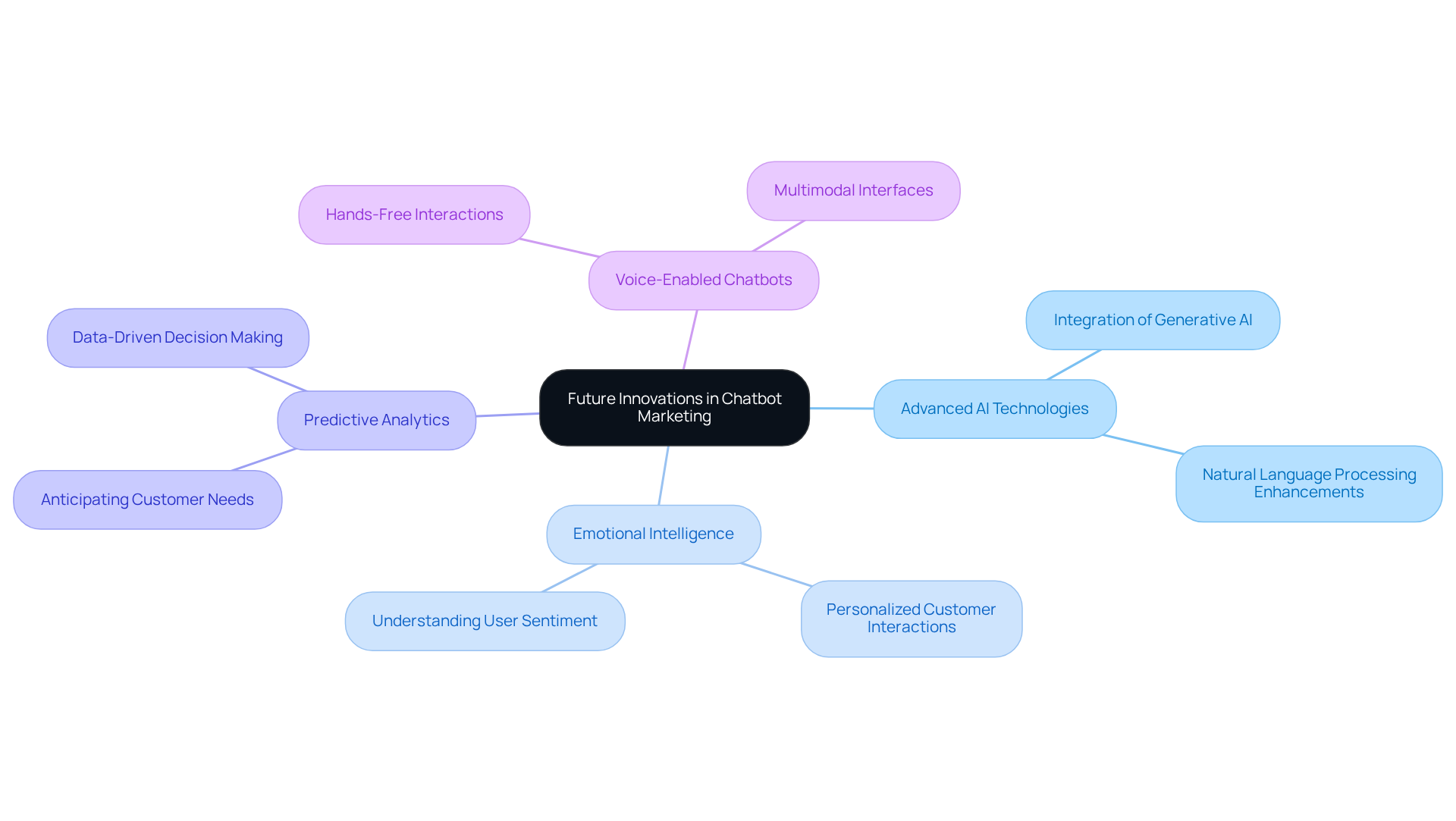
Conclusion
In the rapidly evolving landscape of customer engagement, chatbot marketing has emerged as an essential strategy for businesses seeking to enhance user interactions and drive sales success. The integration of advanced technologies like voice AI and large language models is not merely a trend; it is a necessity for maintaining competitiveness in the digital age. As companies adapt to these innovations, they can craft more personalised, efficient, and satisfying experiences for their customers.
Throughout this article, we have shared key insights regarding:
- The transformative impact of voice AI in chatbot marketing
- The significance of large language models in facilitating human-like interactions
- The role of automation in enhancing customer service
Furthermore, the importance of:
- Personalisation strategies
- E-commerce integration
- Data-driven insights
- Ethical AI practises
has been underscored as crucial components for businesses aiming to leverage chatbots effectively. Collectively, these elements contribute to a more cohesive and engaging user experience, ultimately fostering increased customer satisfaction and loyalty.
As the market for chatbot marketing continues to expand, with projections indicating significant growth in the coming years, it is imperative for businesses to embrace these trends proactively. By investing in innovative chatbot technologies and strategies, companies can not only meet but exceed customer expectations, positioning themselves for future success. The time to act is now—adopting these advancements will enhance operational efficiency and secure a competitive edge in an increasingly automated and customer-centric marketplace.
Frequently Asked Questions
What is Agentics and how does it transform chatbot marketing?
Agentics is a company that transforms chatbot marketing by integrating voice AI solutions, enhancing user engagement and streamlining communication through advanced voice recognition and natural language processing technologies.
What are the benefits of using voice-enabled chatbots?
Voice-enabled chatbots handle inquiries in a conversational style, creating a personalised and engaging user experience, which leads to enhanced customer satisfaction and greater sales efficiency.
What are the future projections for AI in client interactions?
By 2025, it is projected that AI will manage 95% of all client interactions, indicating the growing importance of voice AI in chatbot marketing strategies.
How many companies plan to implement AI-driven voice technology by 2026?
Approximately 80% of companies plan to implement AI-driven voice technology in their service operations by 2026.
Can you provide examples of successful implementations of voice AI?
NIB Health Insurance saved $22 million through AI-driven digital assistants and reduced service costs by 60%, demonstrating the effectiveness of voice AI in enhancing customer engagement.
What impact do voice AI technologies have on customer satisfaction?
Companies utilising voice AI report up to a 30% increase in satisfaction scores, highlighting the tangible benefits of these technologies.
How are large language models (LLMs) influencing chatbot interactions?
LLMs, like GPT-4, enable chatbots to understand context and provide responses that closely resemble human conversation, significantly improving the user experience.
What role do Agentics’ customised voice AI solutions play with LLMs?
Agentics’ customised voice AI solutions enhance the capabilities of LLMs, allowing enterprises to leverage them for better client interaction and satisfaction.
What are the advantages of chatbot marketing in customer service automation?
Chatbot marketing allows businesses to provide 24/7 support, automate routine inquiries, reduce response times, and enable human agents to focus on complex issues, improving overall service quality.
What financial benefits have businesses experienced by adopting chatbot marketing?
Businesses that have embraced chatbot marketing report a 30% reduction in support costs and faster complaint resolution, with 90% of enterprises experiencing quicker resolutions.
What is the anticipated growth of the global chatbot marketing market?
The global chatbot marketing market is expected to reach $46.64 billion by 2029, indicating increasing investment in this technology.
Enjoyed this post? Share it with your network!
10 Best AI Sales Tools to Boost Your Team’s Performance

Discover the top 10 best AI sales tools to enhance team performance and drive revenue growth.
Mastering Test Call Numbers: A Step-by-Step Guide for Sales Directors

Elevate your communication with our guide on mastering test call numbers for sales success.
7 Ways Automated Outbound Calls Boost Sales Performance

Discover how automated outbound calls enhance sales performance and streamline communication.
